Nanocomposites: promising materials for food packaging [Green science in action 2]
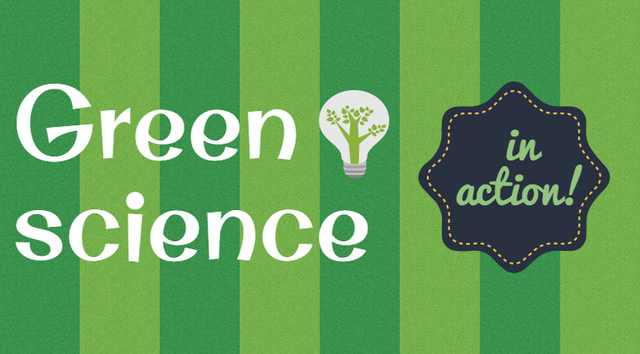
Green science in action posts aim to expose what is happening in the world regarding the development of the industry and its impact on society from the environmental point of view, contemplating what alternatives are being considered so that not only It is achieved having a solid economic production, but also and above all a commitment to the protection and conservation of the environment.
If you missed earlier posts:
Green science in action 1: Bioethanol: actually not so “bio”
Nanocomposites: promising materials for food packaging
A month ago I posted about food packaging contamination. There, I only mentioned an alternative to packaging made of nonbiodegradable polymeric materials. However, the study of possible alternatives has increased in recent years and I want to expose one of the youngest; utilization of biodegradable polymers nanocomposites.
The nanocomposites are composed of a dispersed phase that has one or more dimensions in the range of 0.1 thousandths of a millimeter (100 nanometers) or less and an stationary phase, that in this case is a polymer matrix. The size of a material doesn’t affect its properties in general, however nanocomposites are an exception, since the size and shape of the disperse phase have significant changes in their properties. In addition, some nanocomposites attribute active properties to the polymer matrix, which enhance the preservation of food [1].
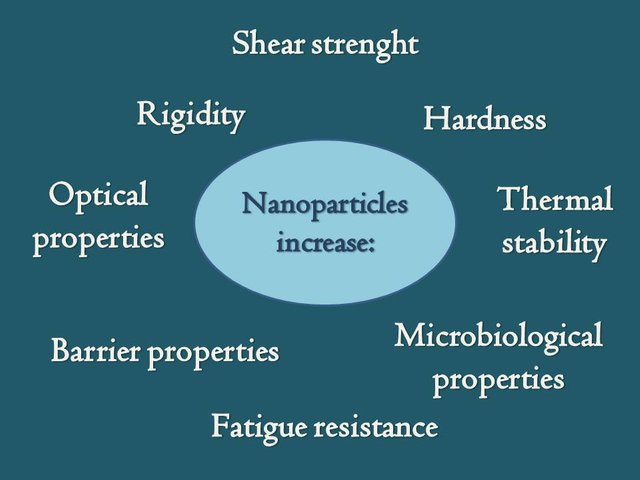
Nanocomposites preparation
The way in which the nanomaterial is added determines the properties of the final nanocomposite, since if there is no adequate dispersion is possible that the resulting material is tactoid (agglomerate) and not exfoliated as expected. Nanomaterial may be spherical or irregular shape (nanoparticles), plates, tubes, fibers or wires, as shown in the following image
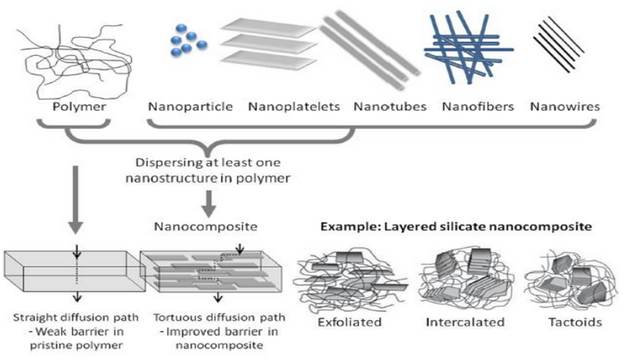
The nanoparticles are distributed in the polymer matrix and the need for a surfactant that allows binding of both depends on the compatibility that exists between the dispersed phase and the fixed phase.
Nanoclay
One of the most studied nanoparticles for packaging materials application is the clay one, that can be added to a biodegradable polymer such as starch.
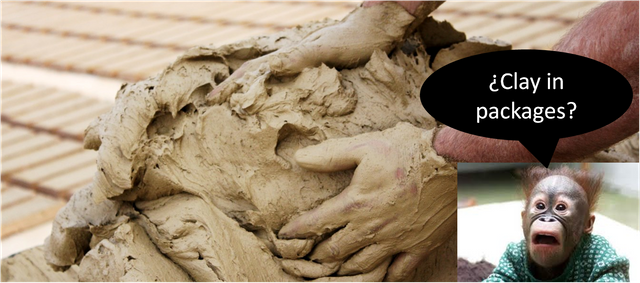
Yes ... even if it sounds crazy, clay nanoparticles are a useful material for forming plastic films with applications in food packaging; they are dispersed in the polymer matrix in minimal amounts (less than 5%), so don’t influence in film biodegradability. Montmorillonite nanoplatelets shaped is the clay most widely used because it is effective, inexpensive and highly stable.
Silver nanoparticles
Silver nanoparticles are used to impart antimicrobial properties to the material. There are other antimicrobials such as titanium dioxide, copper oxide, zinc oxide, magnesium oxide and chitosan, however, the silver nanoparticles are toxic to more strains and are more stable over time. The inhibition mechanism of silver nanoparticles is shown in the following image
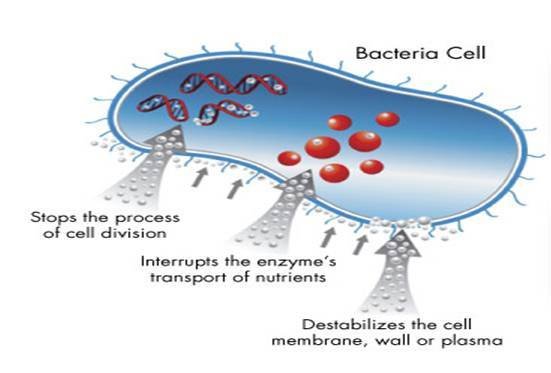
Despite the advantages that they represent, silver nanoparticles are also toxic to humans, so the FDA regulates commercial application.
Conclusion
Nanocomposites represent a potential development in the biodegradable plastics industry, as they improve their properties making them more resistant and durable. However, it is a very recent technology which industrial demand is low because in some cases, as in silver particles utilization, can be harmful to consumer health if there isn’t adequate regulation.
Bibliography
Thank you for reading me! I invite you to read this post about steemSTEM, a new initiative to promote blogs about science, maths, chemistry… and much more!

Another potential packaging material is graphene .
Yes, graphene is a wide investigated material because of its properties; is extremely thin but strong as well. I don't know a lot about its applications but I think it hasn't been proved in polymer mixtures
why would a polymer mixture be needed?
I thought you meant that instead of nanoclay or silver nanoparticles could be use graphene in nanotubes shape, I just find an article about addition of graphene in biopolymer matrix.
nope...I didn't say that.
Note: Graphene and bucky tubes are twoseparte things...they both just happen to be allatropes of carbon.
Graphene is a one dimensional material. It has length and width but no thickness. (one atom thick to be more precise)..it also happens to be the strongest material ever discovered, 250 times stronger than the best steel. It alos happens to be helium proof. Helium is the hardest thing known to contain. If it can contain helium then anything biological will be no problem. Carbon is by definition organic...it's naaaaaatural. So no problem there?
Oh okay, I get it now. But I disagree in the last part; if we see it since biodegradable point of view, there is a problem, because graphene isn't biodegradable by its own. In deed, if you check the article I mentioned they propose a combination of graphene and biopolymer, which would mitigate the environmental impact.
six deep.
